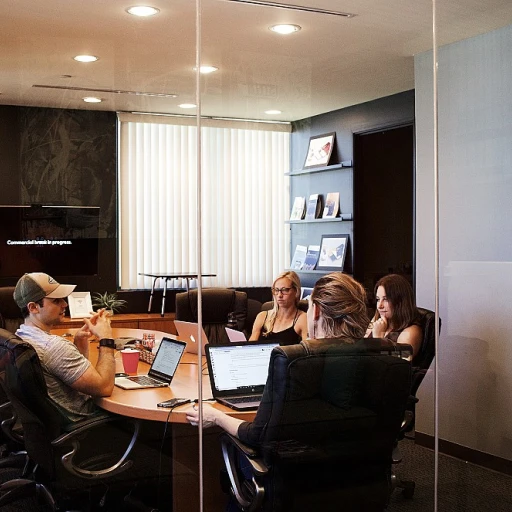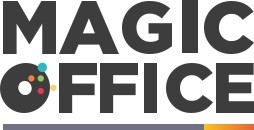
Understanding Material Distribution
Comprehending the Essence of Material Flow
In the realm of UK offices, understanding the intricacies of material distribution is pivotal for enhancing both efficiency and productivity. At its core, material distribution encompasses more than merely moving items from one point to another. It is an intricate system involving various components, processes, and stakeholders. Each production process requires a precise quantity of materials readily available in the right locations. It's akin to a well-choreographed dance where each step is critical to performance. The seamless flow of materials is not only a matter of convenience but a strategic aspect of managing resources effectively. Material issues often arise due to lack of proper planning, incorrect inventory levels, or misplacement within the storage location. Ensuring that stock is issued efficiently is an ongoing challenge. This involves selecting the correct material issuance method, ensuring the right components are issued to the shop floor, and maintaining an accurate list of available materials. Equipped with a release system, UK offices can enhance their material release processes by combining technology with strategic planning. Work orders are matched with the necessary materials, reducing delays in production. Each item is accounted for, from its release to the work center to its completion on the shop floor. Accurate inventory management is crucial when dealing with lot serial numbers and various stock items. A streamlined material issuance system alleviates common production issues and ensures components are where they need to be when they’re needed. Implementing physical measures like an issue voucher and digital solutions like a checkbox method ensures every material issued is meticulously tracked. For more insights into maintaining security and efficiency in your office space, consider exploring efficient desk and drawer lock solutions. This aids in safe and secure material management within the workplace.Challenges in Material Management
Material Distribution Obstacles and Solutions
In any office setting, effective material distribution is integral to seamless operations, yet numerous challenges can arise, complicating this process. From ensuring the right stock levels to allocating components accurately, these issues significantly impact productivity and efficiency. The first hurdle often faced is managing the variety and quantity of materials. With a constant need for diverse items such as office supplies, production components, and more, ensuring prompt material issuance is essential. Mismanagement here can result in delays, ultimately affecting the workflow. Another challenge is the precise selection and release of materials. A robust system for material issuance and release process can avoid unnecessary delays. Utilizing an inventory control mechanism plays a critical role in achieving this. Incorporating features like a check box for tracking and verifying material issuance ensures accountability and accuracy. Moreover, the materials' storage location is a pivotal factor. Strategically positioning materials close to the shop floor or designated work centers reduces time wasted in retrieval, improving overall operational flow. When materials are scattered or not easily accessible, it leads to inefficiencies and hampers quick response to production issues. Additionally, the method used for material issue, including the creation of issue vouchers and accurate recording of lot serials, affects how smoothly materials are managed. An efficient method calls for consistent updates to the inventory system, ensuring the right items are in stock and available for release when required. By recognizing these challenges and adequately addressing them, UK offices can substantially enhance their efficiency. For detailed strategies on improving office layouts to tackle such challenges, consider exploring ways to enhancing office efficiency with an L-shaped reception desk.Best Practices for Material Allocation
Implementing Effective Allocation Strategies
To optimise material distribution in your office, it’s essential to apply best practices that enhance the efficiency of material allocation. Here are some approaches that can significantly improve the process:
- Standardising Material Allocation: Implement a standard method of issuing materials that aligns with your company’s production and work order demands. This ensures every item and component is allocated consistently across the board.
- Accurate Inventory Management: Keep an accurate inventory list to manage stock levels effectively. Use a reliable inventory system that allows you to select and track each item and component that needs allocation.
- Location-Based Material Deployment: Ensure materials are distributed based on the work center or shop floor location. This targeted approach reduces movement and increases efficiency in material issue processes.
- Real-Time Adjustments: Use technology to monitor production progress and make real-time adjustments to material releases as necessary. This ensures that materials are issued without delays in the release process.
- Employee Involvement: Engage employees in the allocation process by providing them with issue vouchers or check boxes to facilitate smooth material issuance.
- Tracking Material Usage: Utilise lot serial tracking methods to monitor which materials are used for specific production issues. This enables better forecasting and planning for future material needs.
Embarking on these best practices not only addresses the challenges related to material management but also enhances the material release efficiency. For further insights into creating a seamless work environment, consider enhancing employee experiences with convenient solutions. By implementing these strategies, you can ensure a well-organised and cost-effective material management system.
Leveraging Technology for Efficiency
Harnessing Technology for Enhanced Efficiency
To combat the complexities inherent in the distribution of materials, leveraging technology has become a crucial component. Modern systems are adept at streamlining the material issue process, offering real-time tracking and better management of inventory.
Implementing an intelligent inventory system allows for the precise tracing of each item's location and status. When integrated with robust production processes, such systems can ensure efficient allocation and reduce delays on the shop floor. Real-time data capture through IoT devices or barcode scanning enhances the visibility of materials and their movements, from receipt to storage location and through final release.
Moreover, the use of analytics tools enables companies to better predict material demands based on historical data. By incorporating AI-driven algorithms, businesses can optimize their stock levels, minimizing both overstock and stockouts. This predictive approach is particularly useful during fluctuating market demands, ensuring that the right quantity of items is always available.
To ensure the accuracy of data and improve the efficiency of material issuance, many businesses are now employing digital issue vouchers. These replace traditional, manual methods and reduce the likelihood of errors often associated with paper-based processes. Digital solutions also provide easy access to detailed material issue records, offering valuable insights for auditing and production reporting purposes.
A well-planned strategy involving technology not only leads to a streamlined work environment but also supports the release process across various work centers. By automating notification systems, companies ensure timely alerts on low-stock conditions, expediting the release material and allocation to designated locations.
Utilizing these smart systems provides businesses with a competitive edge, ultimately leading to improved operations, reduced costs, and better sustainability outcomes. In an ever-evolving market, technology-driven solutions play a pivotal role in shaping efficient and robust material management practices.
Cost-Effective Material Management
Cost-Effective Strategies in Materials Management
In an office setting, managing the cost-efficiency of material distribution is a key concern. Ensuring the right quantity of materials is available at the right time and location can contribute significantly to the financial health of a company. Let's explore some strategies that can aid in achieving cost-effectiveness in materials management.
One fundamental approach is to implement a robust inventory system. This system tracks the stock levels, movements, and locations of items within the premises. By regularly updating this inventory, offices can prevent overstocking or understocking of components, thus aligning with production needs and minimizing waste.
Adopting an efficient method for material release is also crucial. Automating the material issuance process ensures that materials issued are accurately recorded, thereby preventing discrepancies between the work order and the actual items issued. A systematic release process can incorporate features such as a "check box" system and "issue vouchers" which help in maintaining an accurate list of items released to the shop floor.
To further streamline the materials process, aligning with production schedules by synchronizing material issuance with the production issue timeline can reduce downtime and increase productivity. This synchronization ensures that all required materials are in the right "storage location" at the work center exactly when needed, minimizing delays.
Improving communication and coordination across departments can avoid redundant material movements. For instance, ensuring that all departments are aware of the "lot serial" numbers and the production requirements can help in optimizing the selection and movement of materials.
Finally, regular audits of the material management process can highlight areas where costs are incurred unnecessarily. By periodically reviewing the process, organizations can identify issues, streamline components, and thus release materials in the most cost-effective manner possible.
Sustainability in Material Usage
Embracing Sustainability in Office Material Management
Incorporating sustainable practices in material management is not just a trend; it's a necessity for modern UK offices. Implementing eco-friendly methods can significantly reduce waste and improve efficiency across the board.- Efficient Inventory Management: Regularly audit your inventory to ensure that only necessary items are stocked. This reduces the risk of overstocking and waste, especially with perishable or quickly outdated materials.
- Recycling and Reusing: Encourage recycling of materials and reuse components where possible. For instance, use recycled paper and refillable ink cartridges. This not only saves costs but also minimizes environmental impact.
- Eco-friendly Suppliers: Select suppliers who prioritize sustainability in their production process. This includes using materials that are biodegradable or made from recycled components.
- Digital Solutions: Reduce paper usage by implementing digital systems for work orders, issue vouchers, and inventory lists. This method not only saves trees but also streamlines the material issuance process.
- Energy Efficiency: Opt for energy-efficient equipment and lighting in your office space. This reduces the carbon footprint and can lead to significant savings on utility bills.













